Saguaro National Park: 1st Time Visitor Guide

Saguaro National Park is Arizona’s desert gem. Whether you’re looking to hike, stargaze, or just drive scenic routes, this guide will walk you through everything you need to know for your first trip to this cactus-filled wonderland (among other gems to check out in this park and nearby)!
Overview
Saguaro National Park is located in southern Arizona, split into two districts flanking the city of Tucson:
- Rincon Mountain District (East) – Known for its mountainous backcountry trails and high-elevation wilderness.
- Tucson Mountain District (West) – More accessible, with denser saguaro populations, scenic drives, and shorter hikes.
Together, they protect the iconic saguaro cactus, which can grow over 40 feet tall and live for more than 150 years.
Photos

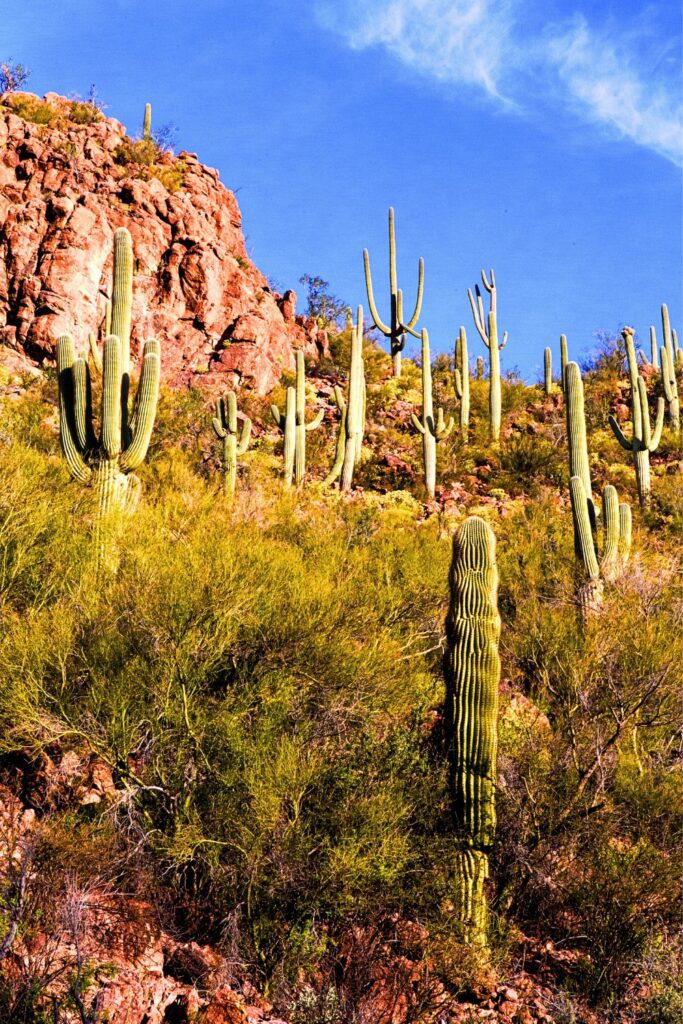
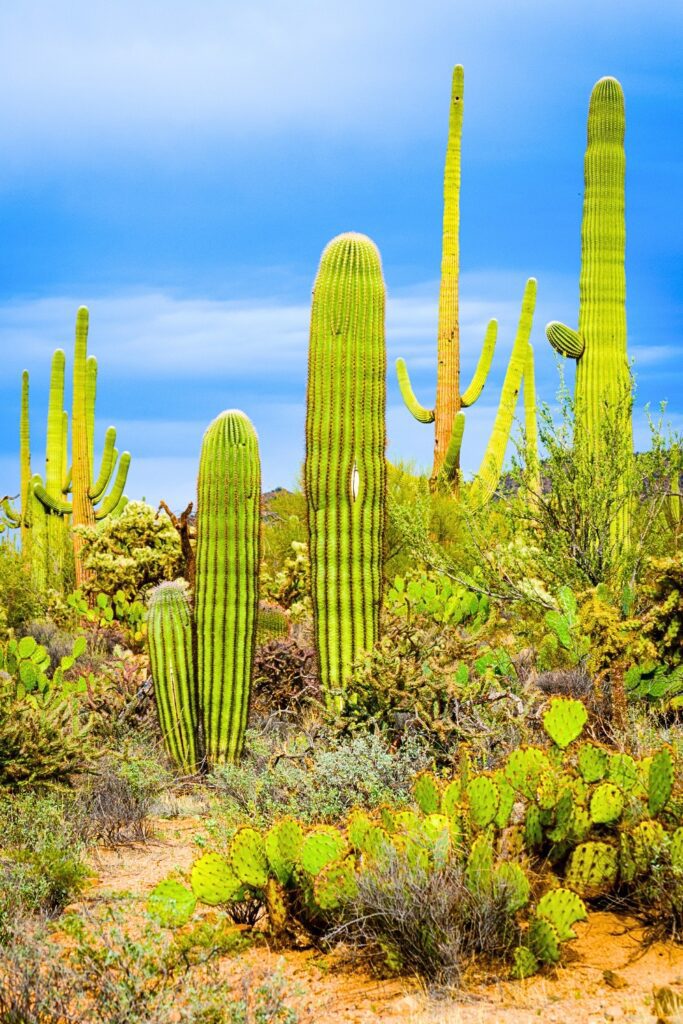
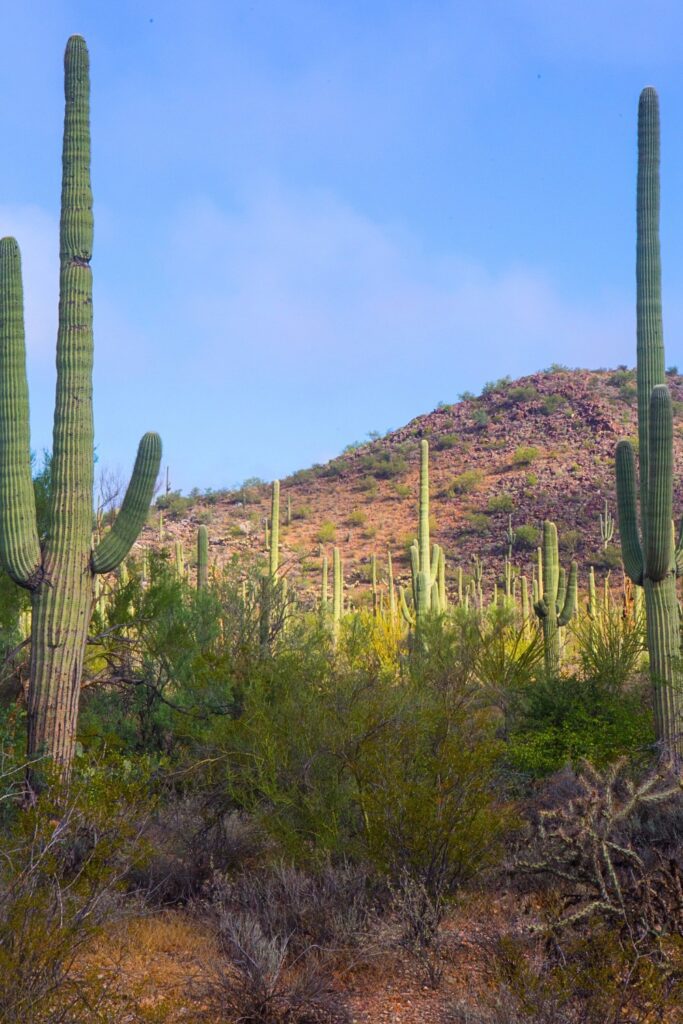
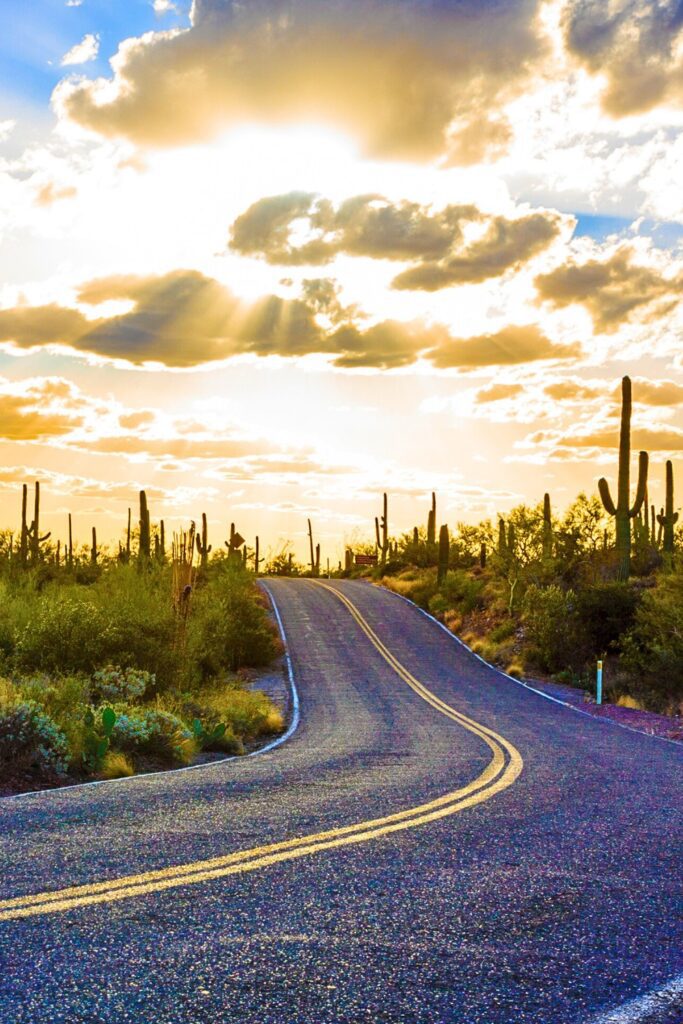

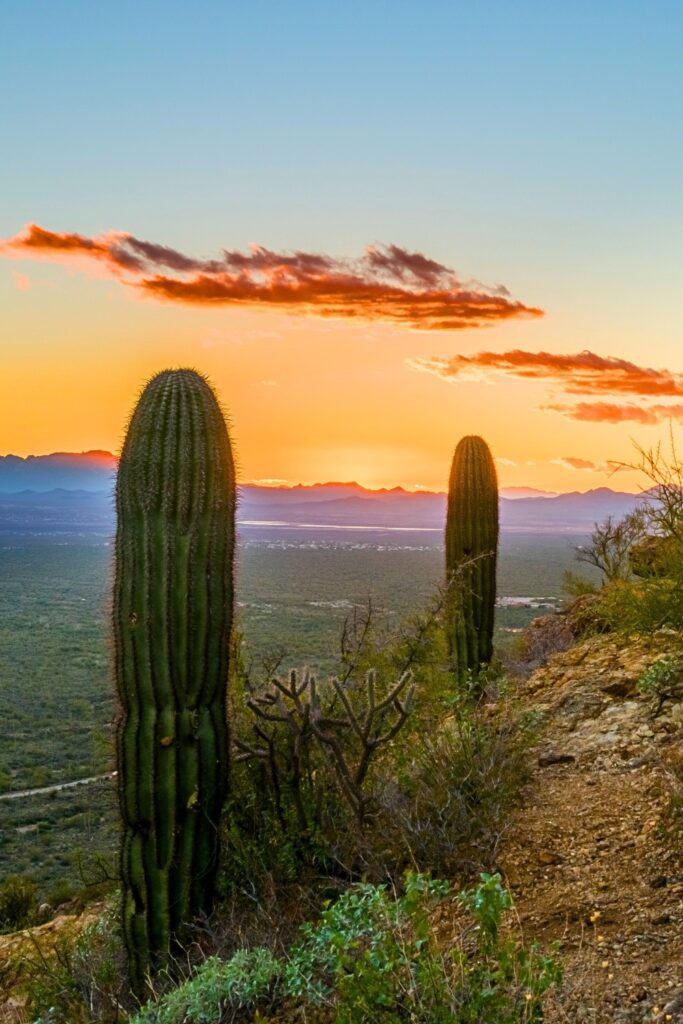

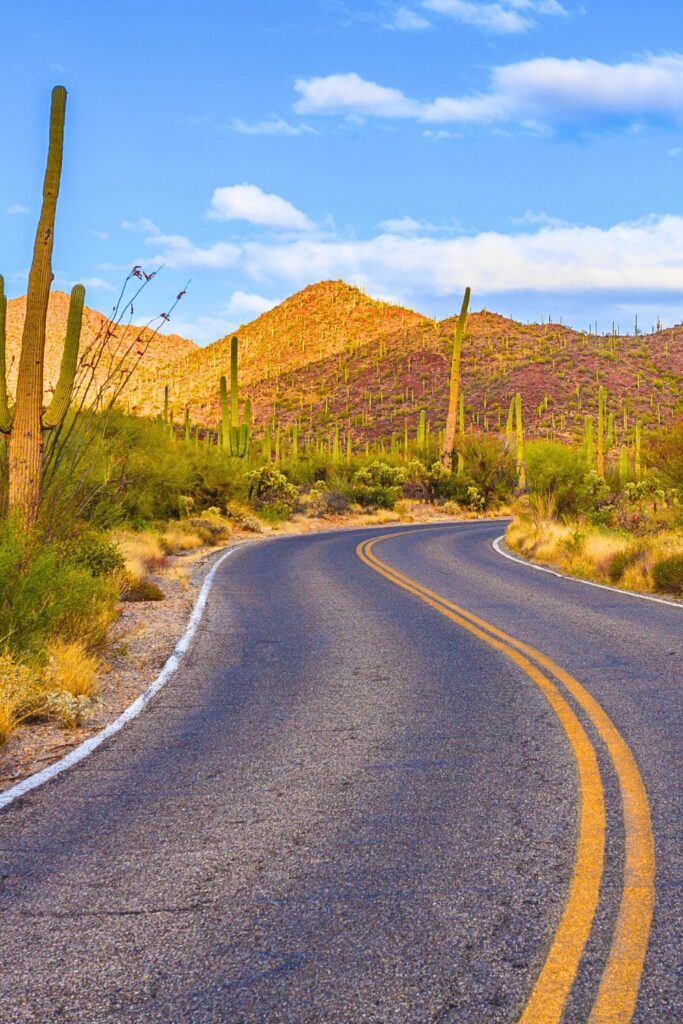
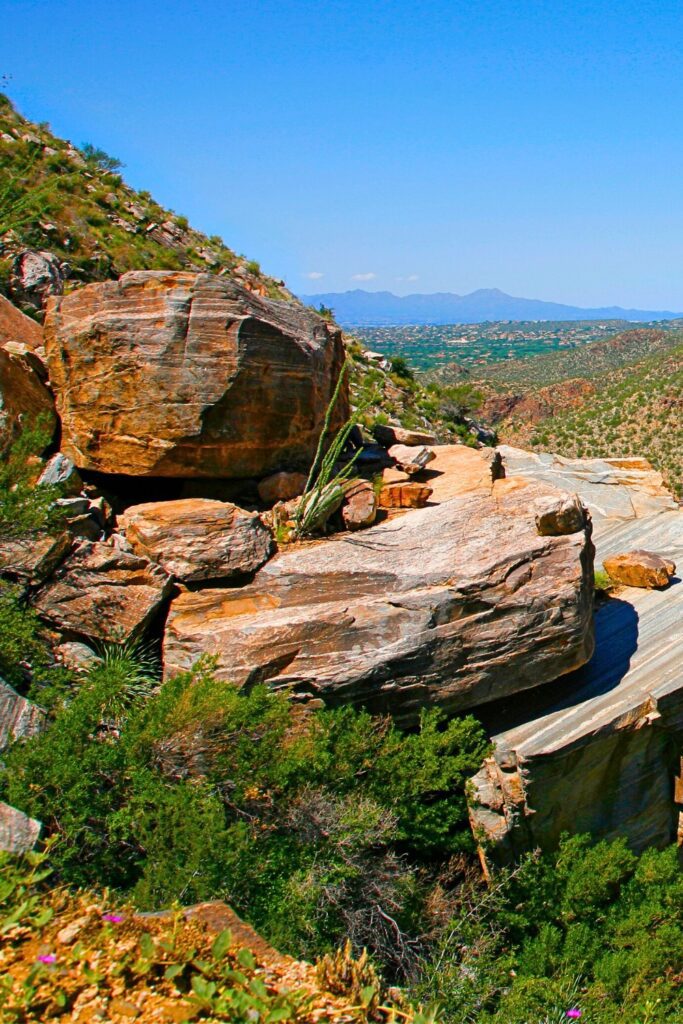
How to Get There
The park is easily accessible from Tucson, Arizona, which sits between the two districts.
- By Car:
- Tucson to the East District (Rincon Mountain): 30 minutes via E Broadway Blvd.
- Tucson to the West District (Tucson Mountain): 25 minutes via Speedway Blvd & Gates Pass Rd.
- By Air:
- Tucson International Airport (TUS) is the closest major airport. It’s only 20–30 minutes away from either district (check flights)
- Phoenix Sky Harbor International Airport (PHX) is 2 hours away by car (check flights)
Best Times to Visit
The desert climate means hot summers and mild winters, so timing your visit is key:
- Best Season: November – March (cooler temps for hiking)
- Spring (March – April): Great for wildflower blooms and cactus blossoms
- Avoid: June – September (extreme heat with temps often above 100°F)
10 Best Things to Do
With tons to do in this park, it’s hard to choose where to start. I recommend a Tripadvisor page with visitor recommendations on the top activities/reviews, and here’s an overview of that:
- Drive the Cactus Forest Loop (East): An 8-mile scenic paved drive with pull-offs and overlooks.
- Catch a Desert Sunset at Gates Pass (West): One of the park’s most iconic sunset spots.
- Visit the Red Hills Visitor Center (West): Learn about desert ecology and pick up maps.
- Explore the Desert Ecology Trail (West): A short, paved loop with interpretive signs.
- Hike to Valley View Overlook (West): A rewarding, easy hike with panoramic views.
- See Petroglyphs on the Signal Hill Trail (West): Ancient Hohokam rock carvings.
- Backpack the Douglas Spring Trail (East): Leads deep into the Rincon Mountains.
- Drive the Bajada Loop Drive (West): A scenic dirt loop through saguaro forests.
- Take a Ranger-Led Program (seasonal): Astronomy nights, nature talks, and guided hikes.
- Stargaze under a dark sky: The desert offers ideal conditions for seeing the Milky Way.
Best Hikes (Beginner to Advanced)
Beginner:
- Desert Ecology Trail (West) – 0.3 miles paved; wheelchair accessible.
- Freeman Homestead Trail (East) – 1 mile; interpretive hike with views and ruins.
Moderate:
- Valley View Overlook Trail (West) – 0.8 miles; stunning desert panoramas.
- Douglas Spring Trail to Bridal Wreath Falls (East) – ~5.5 miles RT; seasonal waterfall.
Advanced:
- Tanque Verde Ridge Trail (East) – Up to 18 miles one-way; strenuous but scenic.
- Wasson Peak via King Canyon Trail (West) – 7 miles RT; summit views and wildflowers.
Packing List
The following recommendations are great for just about any season you visit Saguaro National Park and if you don’t already have them, I recommend checking out my Amazon gear list as it contains most of the following things:
- Hydration pack or 2+ liters of water per person
- Sun protection (hat, sunscreen, sunglasses)
- Sturdy hiking shoes or trail runners
- Snacks and energy bars
- Layers (temperatures can drop quickly after sunset)
- Map or downloaded trail app
- Headlamp or flashlight (for sunset hikes or stargazing)
- Camera or phone with extra battery
- Binoculars (for spotting birds and desert wildlife)
Where to Stay
- Tuscon is the nearest city to the park so most of your hotel/lodging will be there (see options)
Camping Options:
- Backcountry camping is allowed in the East District with a permit.
- Gilbert Ray Campground (just outside the West District) offers tent and RV sites.
- No frontcountry campgrounds are inside the park.
Things to Know Before You Go
- There’s no road connecting the East and West districts, so plan separate visits if you want to explore both.
- Cell service is limited in many parts of the park, download maps beforehand.
- Watch for wildlife: javelinas, snakes, coyotes, and Gila monsters are all common.
- Entry fee: $25 per vehicle (good for 7 days); America the Beautiful Pass is accepted.
- Leave no trace: Stay on trails and pack out your trash.
- Flash flooding can occur in summer, avoid hiking in washes during monsoon season.
Similar sights:
Final Thoughts
Saguaro National Park is more than just a desert, it’s a living landscape filled with towering giants, vibrant sunsets, and a surprising amount of life. Whether you’re hiking the high ridges or soaking in the golden light over the cactus forest, this park offers a unique window into the Sonoran Desert. With a little planning, your first visit will be one you’ll never forget.
